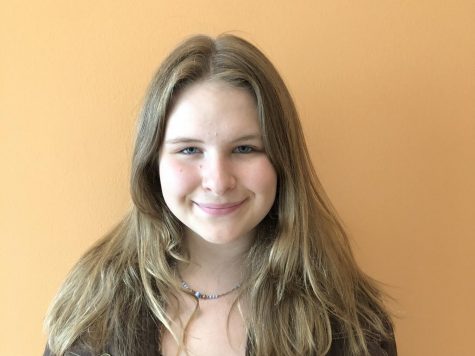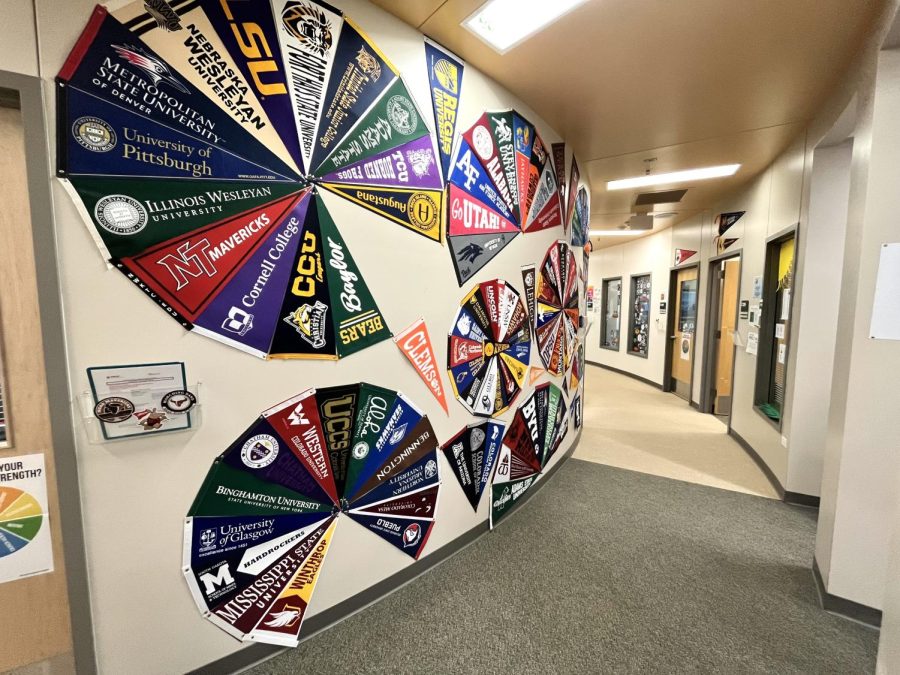National trends show traditional college entrance declining
Students are considering alternative pathways and programs when it comes to post-secondary education
Traditional college remains part of the plan for many graduating seniors, but more are questioning if that is the right path for them.
As the 2022-2023 school year wraps up, seniors are submerged in their post-secondary plans. With factors like college debt, the economy, and means of labor, there’s been a decrease in the amount of high school seniors attending college in recent years as well as an increase in students considering alternative pathways.
According to a report from the National Student Clearinghouse Research Center, enrollment in our nation’s colleges have fallen 7.5% since 2019.
In the wake of COVID-19, the effect of online learning substantially impacted vital traits — like motivation and work ethic — that shape students. Some students feel burnt out from the never-ending work and effort from school and other external factors (like jobs and family life).
42% of American teens reported they were not doing enough to manage their stress, and 13% said they never set aside time to manage it, according to the American Psychological Association.
Other concerns regarding college have risen, with financial stability and college necessity being a frequently discussed question amongst students debating whether or not to attend college.
The Education Data Initiative shared the following facts: since 1978, college tuition rates have increased by 1,375%. The average amount of federal debt shouldered by the average public university student is $37,574. Moreover, student debt is the second highest debt category behind mortgages.
“The education marketplace has shifted significantly and fundamentally,” said Adam Burns, COO of Edge Research, who ran a study regarding the reasons students decided to not attend college. “There are more education options at [student’s] disposal now, more than ever before, and this audience is absolutely taking advantage of these multiple pathways,” he continued.
Questions about the future and whether or not traditional college should be part of one’s secondary plans is not just happening on the national scale – it’s happening at Mead High School as well.
Some students see trade school and alternative pathways as more feasible.
Cole Timien (‘23) said, “I can’t see what I need to do [involving] college as a career path,” because he plans on using CETC – Career Elevation and Technology Center – credits and earning certificates to make more money sooner.
Another student shared that he wants to take a gap year before college.
“I want to go work with my dad… I plan on working for a year to pay for it myself,” said David Erdelyi (‘23).
Some students did not think they would go to a traditional college, but they changed their mind.
Dillon Nevans (‘23) shared that he did not think he would go to college, but he changed his mind because he would be the first of his family to attend college.
“I want to further my education,” Nevans (’23) said.
Decisions depend on the student and their goals, but there are definitely many paths outside of traditional college that one can take.
Your donation will support the student journalists of Mead High School. Your contribution will allow us to purchase equipment and cover our annual website hosting costs.

Abby Kearns is a senior and she enjoys hiking, writing, and hanging out with her friends. She loves her cats and dogs. She is looking forward to working with new people and exploring new ideas.

Melia is a senior. She enjoys reading, writing, and listening to music. This is her third year in Journalism. She’s excited to watch her skills grow throughout the school year and see where her writing takes her.

